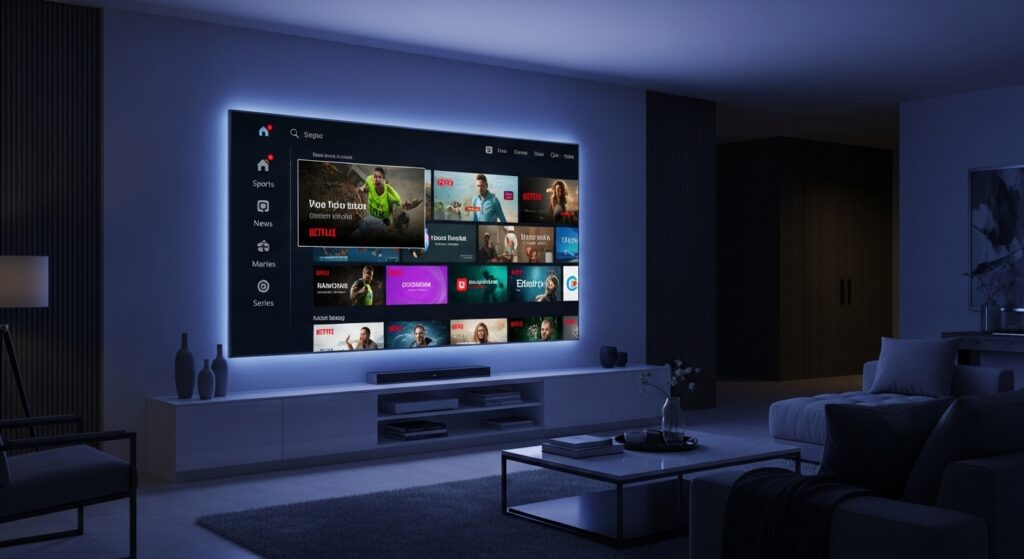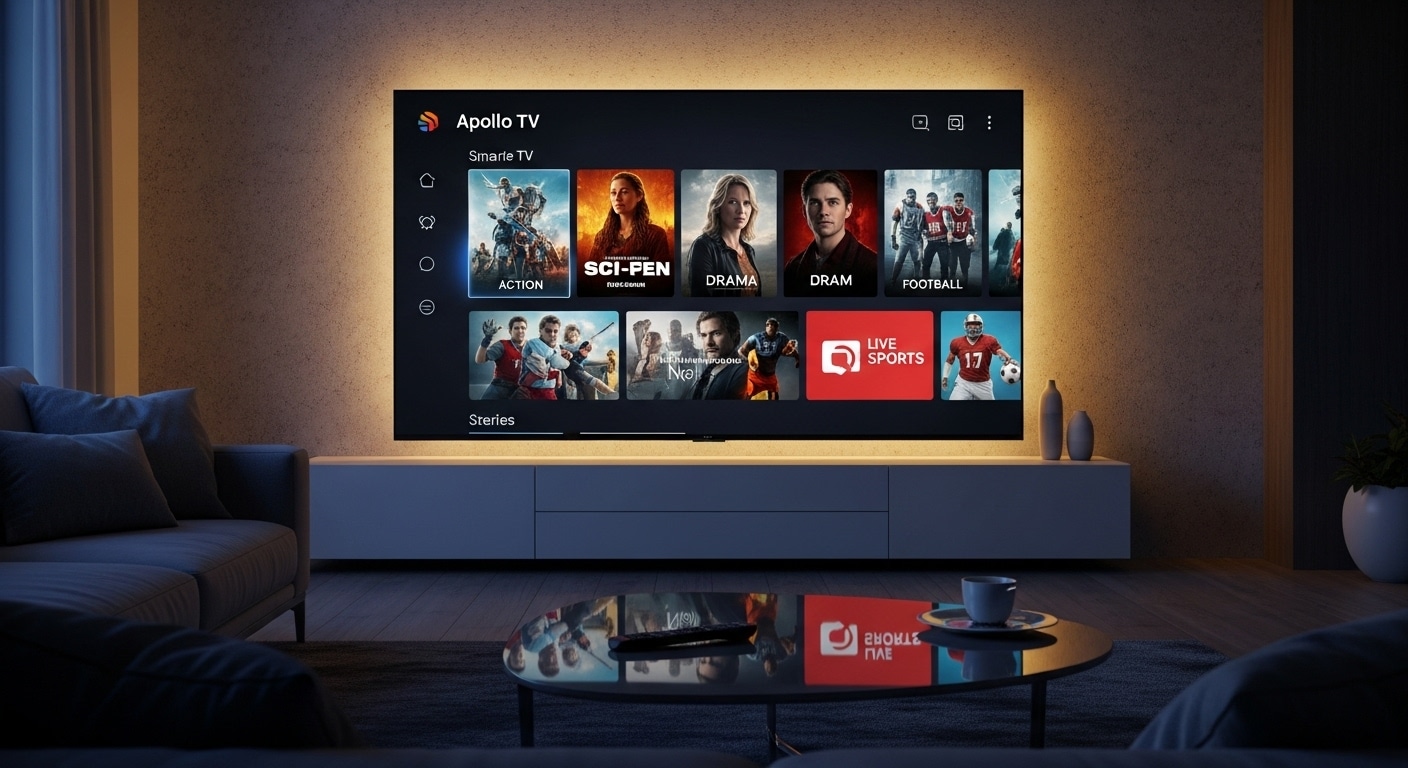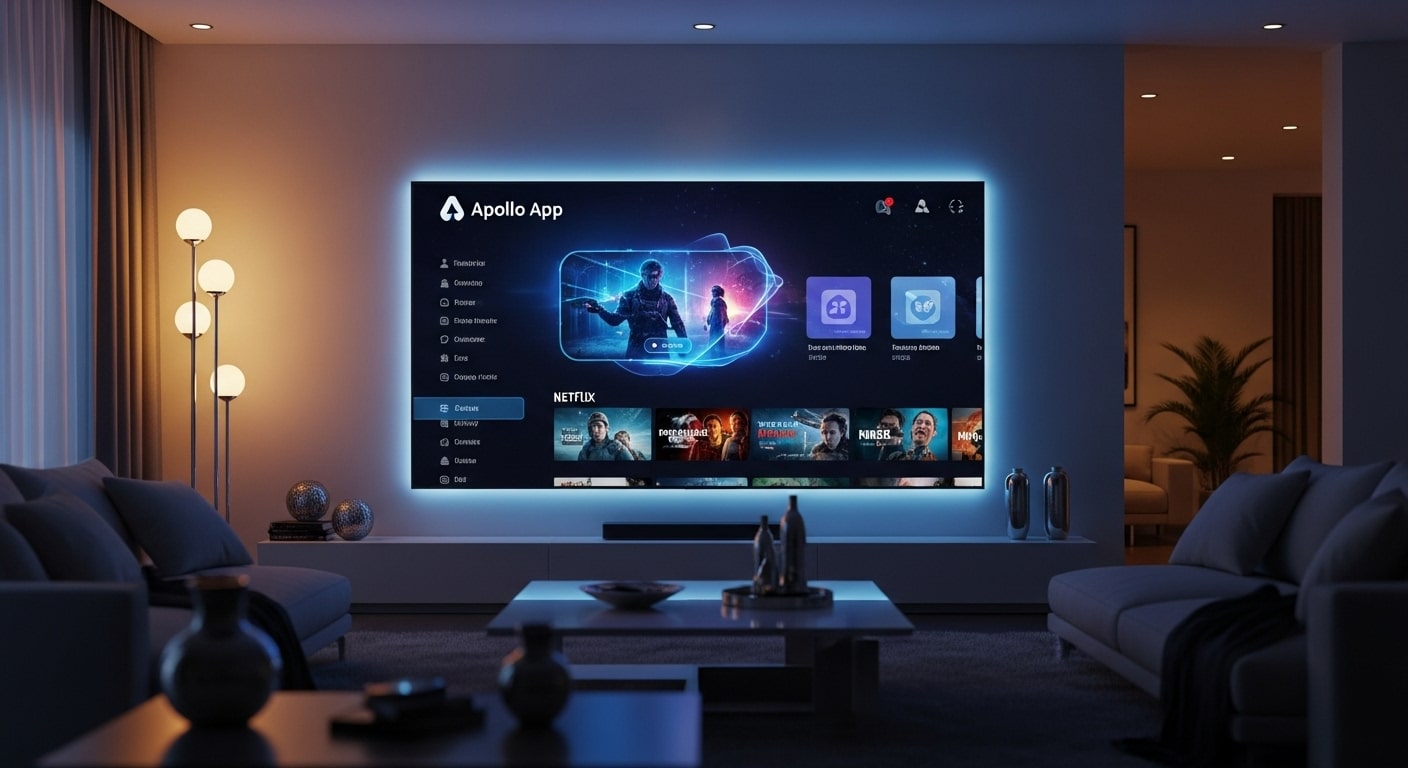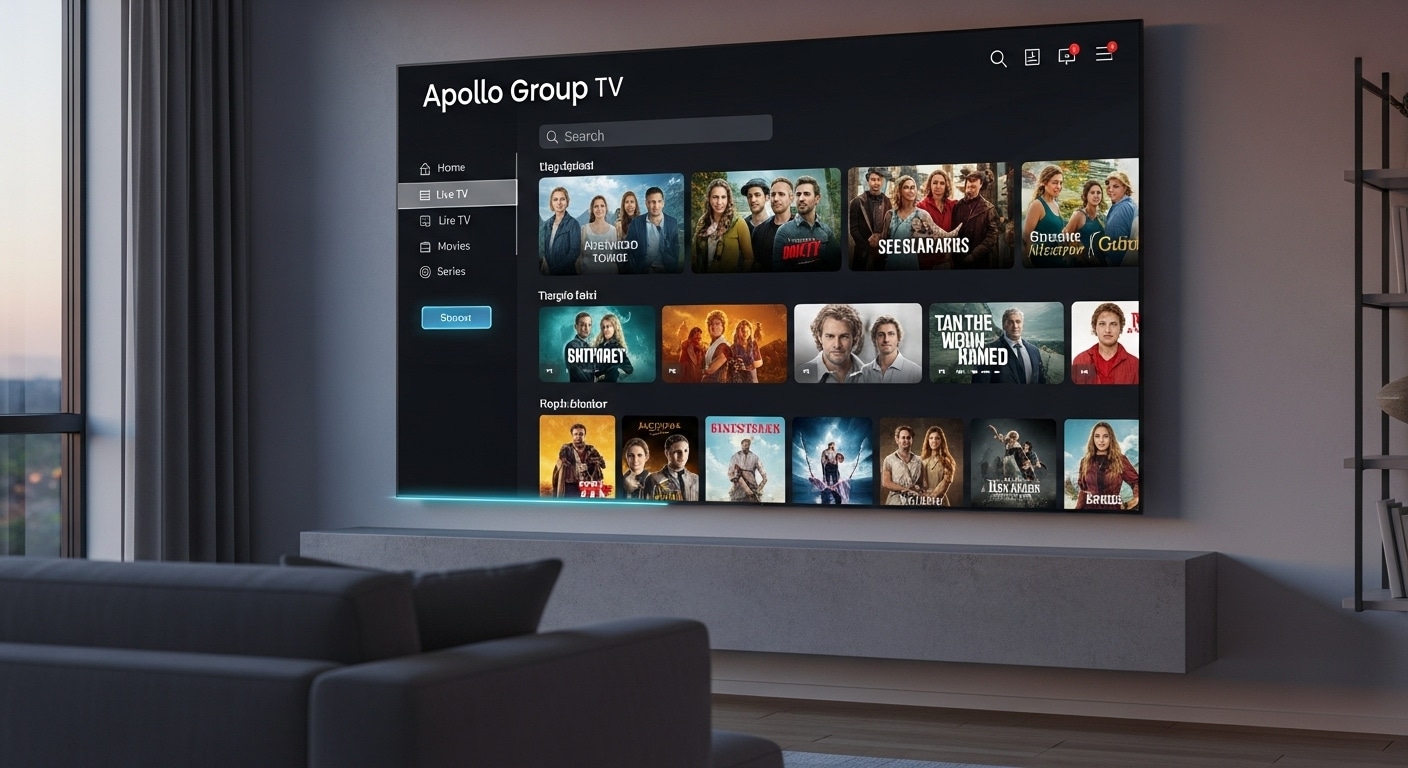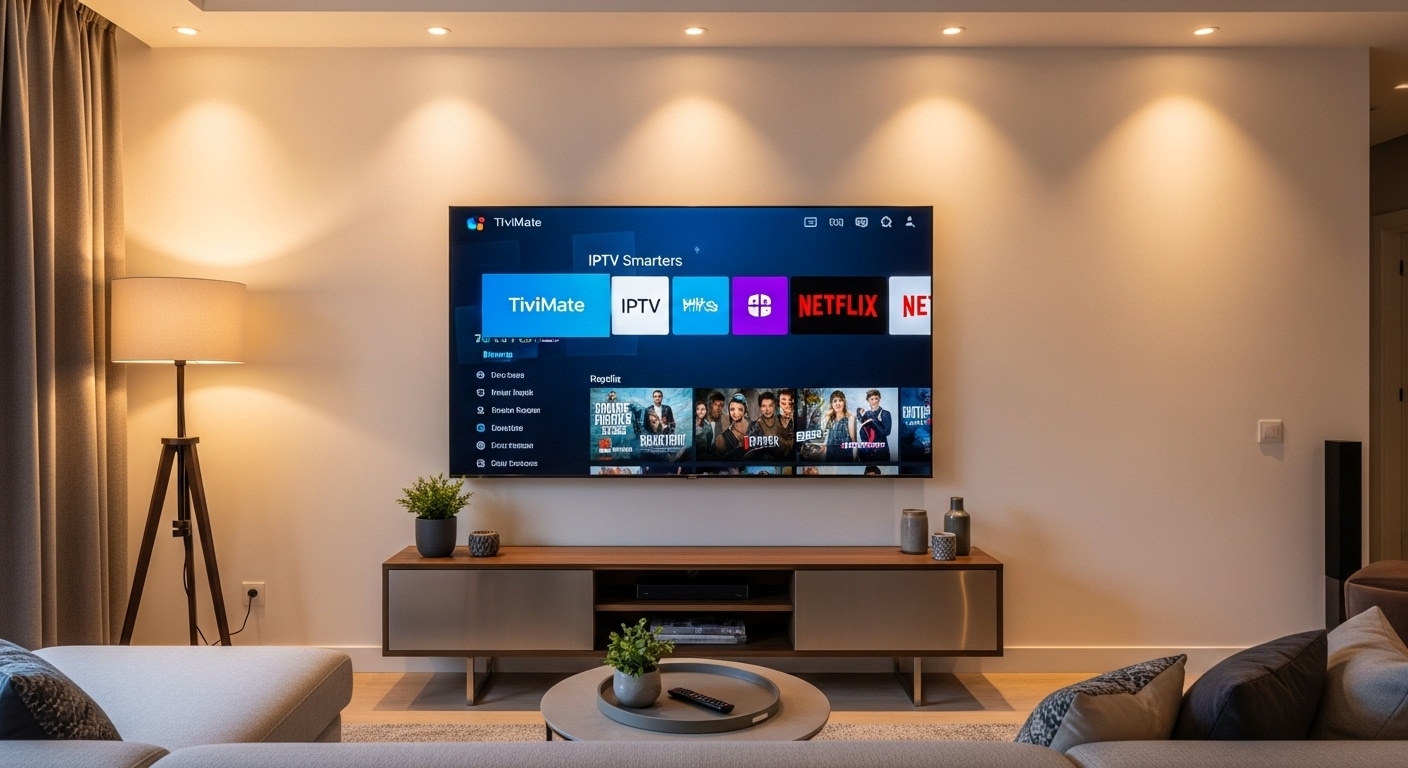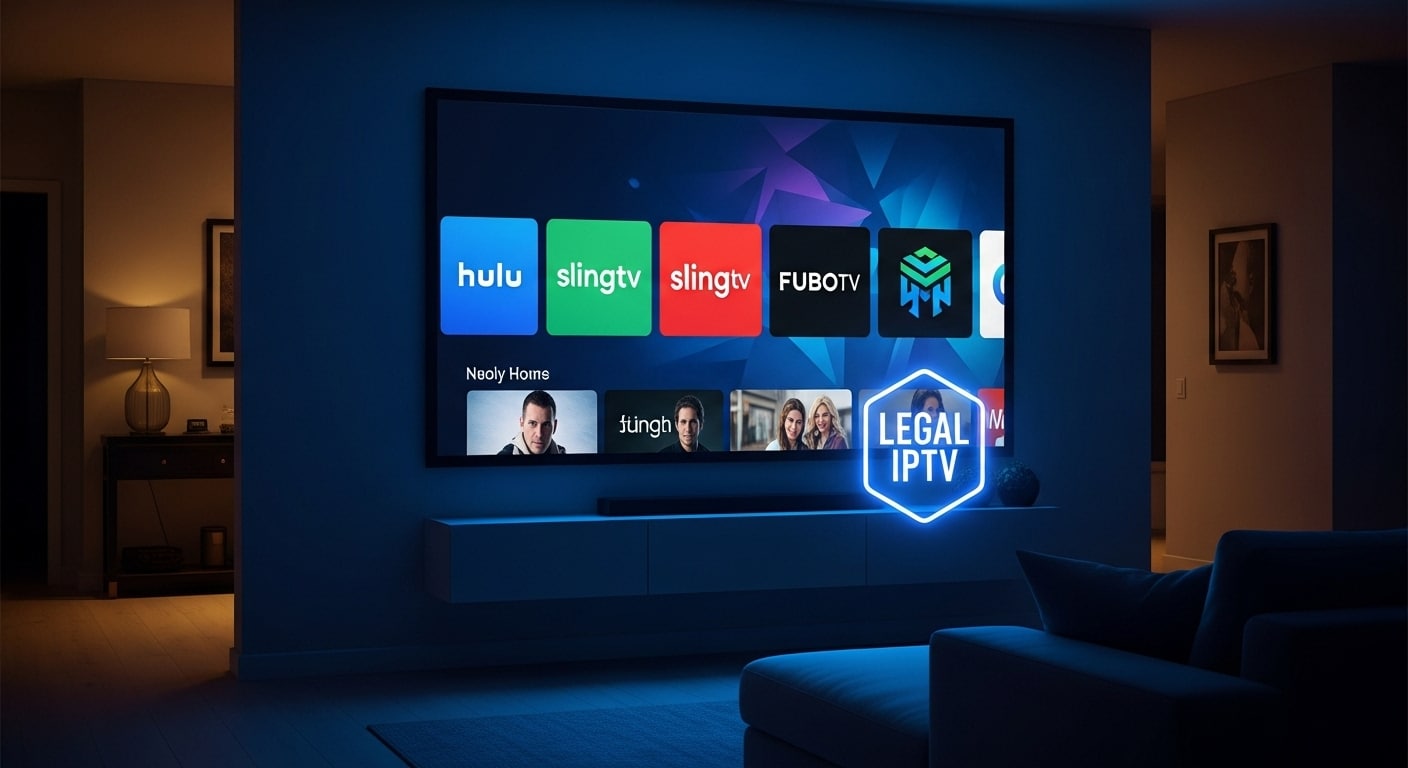Many people nowadays ask what is iptv? Internet Protocol Television, commonly known as IPTV, is the modern way of watching television through the internet instead of traditional cable or satellite. Unlike conventional broadcasting, IPTV allows you to stream your favorite live TV channels, movies, and shows directly through an internet connection. This makes it faster, more flexible, and far more personalized than the old methods of watching television.
In simple terms, IPTV delivers television content using your internet connection rather than physical cables. It gives you access to thousands of live TV channels and a massive library of on-demand content, including movies and series from platforms like Netflix, Disney+, and Amazon Prime Video. With IPTV, you can pause, rewind, or replay your favorite programs anytime you want, all from a single device such as your Smart TV, Firestick, or mobile phone.
This complete guide will explain everything you need to know about what is IPTV, how it works, the different types available, and how you can get started safely. By the end, you will have a clear understanding of why IPTV has become the preferred choice for millions of viewers across the United States who want flexibility, variety, and convenience in their entertainment experience.
Table of Contents
How Does IPTV Actually Work? (A Simple Visual)
To understand what is IPTV, it helps to see how it actually works behind the scenes. IPTV stands for Internet Protocol Television, and it uses the same kind of technology that powers websites and online streaming platforms. Instead of broadcasting programs through radio waves or satellite signals, IPTV sends television content through the internet using data packets.
Every time you click on a channel or choose a movie, your device sends a request to the IPTV server. The server then delivers the content directly to your screen through your internet connection. This system is called the client-server model. The client is your device, such as a Smart TV, laptop, or streaming box, and the server is the provider that hosts all the live TV channels and video on demand.
There are two main delivery methods used by IPTV services:
Unicast: This is a one-to-one connection used for on-demand content. When you select a movie or a TV episode, the IPTV server sends that specific video stream only to your device. This method is ideal for VOD platforms because it allows every viewer to watch at their own pace.
Multicast: This is a one-to-many connection, most commonly used for live TV. The IPTV provider sends a single stream of a live channel to many viewers at once, which helps reduce bandwidth usage and ensures smooth, real-time viewing for large audiences.
With these two systems, IPTV efficiently delivers both live broadcasts and on-demand content with high quality and stability. Imagine watching your favorite sports event in real time while also having the option to pause or rewind without any cables or satellite dishes. That flexibility is one of the main reasons why millions of people are switching to IPTV in the United States.
In summary, IPTV transforms the traditional television experience into an interactive and internet-based model. The combination of Unicast for VOD and Multicast for live TV allows users to enjoy content whenever and wherever they want, all powered by a simple internet connection.
The 3 Main Types of IPTV Services Explained

To fully understand what is IPTV, you need to know that not all IPTV services work the same way. The technology behind Internet Protocol Television allows for several viewing options, giving users flexibility depending on how they prefer to watch their content. The three main types of IPTV services are Live IPTV, Video on Demand (VOD), and Time-Shifted Media. Each one offers a different experience while using the same internet-based system.
Live IPTV
Live IPTV works just like traditional TV broadcasting but through the internet. With this type of IPTV, users can watch news, sports, and live events as they happen in real time. The main advantage of Live IPTV is the convenience of streaming from any device without relying on cables or satellite equipment. Sports fans especially love Live IPTV because it allows them to watch pay-per-view matches, local channels, and worldwide events instantly with smooth playback.
Video on Demand (VOD)
Video on Demand is one of the most popular features that make IPTV so attractive to modern viewers. Instead of waiting for a scheduled broadcast, you can access a vast library of movies, series, and documentaries at any time. VOD platforms under IPTV include titles from popular services such as Netflix, Disney+, Hulu, and Amazon Prime Video. The ability to watch content whenever you want, pause it, or continue later is what makes VOD a key part of the IPTV experience.
Time-Shifted Media
Time-Shifted Media is another unique advantage of IPTV. It lets viewers replay programs that were broadcast earlier, making it perfect for people who miss live shows. This feature, often called catch-up TV, stores recent broadcasts on the IPTV server for a limited time. You can start a show from the beginning or watch a missed episode without needing to record it manually.
Together, these three categories define the flexibility that makes IPTV the preferred entertainment choice in the United States. Whether you want to enjoy live television, explore a huge collection of on-demand titles, or rewatch a missed broadcast, IPTV combines all these options into a single, easy-to-use service powered entirely by the internet.
IPTV vs. Everything Else: A Head-to-Head Comparison
When learning what is IPTV, one of the most common questions is how IPTV compares to other television services such as cable, satellite, and newer streaming platforms. To make things clear, IPTV stands out because it uses the internet to deliver content, while traditional systems depend on fixed hardware and broadcasting methods. Understanding these differences helps viewers in the United States choose the best and most flexible way to enjoy their favorite shows.
The biggest advantage of IPTV is that it gives users total control over what they watch and when they watch it. Unlike cable or satellite, which require fixed schedules and installations, IPTV works through your existing internet connection. This means you can stream live TV, movies, and shows on multiple devices such as Smart TVs, phones, and tablets without extra equipment.
Here is a simple comparison to show how IPTV measures up against other options:
| Feature | IPTV | Cable / Satellite TV | OTT Services (YouTube TV, Sling TV) |
|---|---|---|---|
| Content Library | 22,000+ live channels and 90,000+ VOD options from top providers | Limited to local and regional channels | Depends on subscription tier |
| Picture Quality | HD, FHD, and 4K quality depending on internet speed | Often limited by provider’s technology | Varies based on network and plan |
| Hardware Required | Only an internet connection and compatible device | Requires cable box or satellite dish | Works on Smart TVs and apps |
| Flexibility | Can stream anywhere, anytime | Restricted to specific locations | Portable but with regional limitations |
| Cost Structure | Pay for access, not installation or hardware | Monthly service fees plus equipment | Monthly streaming fees |
As seen in the comparison, IPTV clearly offers greater freedom, variety, and value than its competitors. It eliminates the need for cables or satellites, allowing you to enjoy the same or even better quality using the internet you already have.
Another important distinction between IPTV and OTT platforms like YouTube TV or Sling TV is the level of customization. With IPTV, users can choose channels by country, request updates to the content library, and access global programming without restrictions. This level of personalization is unmatched in traditional television services.
In short, IPTV provides the best combination of flexibility, quality, and convenience. It adapts to modern lifestyles where viewers want on-demand access and real-time entertainment across all their devices. This is why millions of users in the United States are shifting from cable and satellite to IPTV for a better, smarter, and more connected television experience.
The Big Question: Is IPTV Legal and Safe?
Anyone discovering what is IPTV for the first time usually asks two important questions: is IPTV legal, and is IPTV safe to use? These concerns are completely valid because, like many internet-based technologies, the legality and safety of IPTV depend on how and where it is used. Understanding the difference between legitimate services and unauthorized providers is essential before you start streaming.
Understanding IPTV Legality
The technology behind IPTV, or Internet Protocol Television, is completely legal. Many well-known companies such as Verizon Fios, AT&T, and Hulu use IPTV technology to deliver content to their subscribers. What can make IPTV illegal is when unverified providers distribute copyrighted shows or live broadcasts without the proper licensing. These unauthorized services often attract users with low prices or free access, but they operate outside the legal boundaries set by organizations like the FCC (Federal Communications Commission).
In the United States, the rule is simple. IPTV is legal if it delivers content that has been properly licensed and authorized by the original broadcaster or distributor. If the provider cannot prove that it has permission to stream that content, then using such a service could expose the viewer to legal risks. Always make sure to choose an official and verified IPTV provider to stay within the law.
Beyond Legal: Is IPTV Safe?
Apart from legality, safety is another major concern for people searching for what is IPTV. Many unauthorized IPTV services can pose security risks because they often use unprotected apps or servers. These can contain malware, intrusive ads, or hidden tracking software that collects personal data. Using these unsafe platforms can lead to privacy violations, unwanted data sharing, or even device infections.
To make IPTV safe and secure, it is highly recommended to use a reliable provider and a Virtual Private Network (VPN). A VPN encrypts your internet connection, protects your identity, and prevents third parties from tracking your streaming activity. It is especially useful when using public networks or unverified applications.
The safest approach is to select a trusted IPTV service that uses encrypted servers and integrated VPN technology. This combination ensures your viewing experience is both private and protected. By sticking to verified services, you can enjoy all the advantages of IPTV without worrying about legal or security issues.
In summary, IPTV is legal and safe when used properly. The key is to understand the difference between authorized and unauthorized sources and to protect your privacy with a VPN. Choosing a reputable provider allows you to experience everything IPTV has to offer while keeping your data secure and your entertainment worry-free.
How to Get Started With IPTV: A 4-Step Guide
Now that you understand what is IPTV and how it works, it is time to learn how to set it up properly. Starting with IPTV is much easier than most people think. Whether you want to stream live TV, watch on-demand movies, or explore international channels, this simple four-step guide will help you begin your IPTV journey smoothly and safely.
Step 1: Check Your Internet Connection
The most important factor for a great IPTV experience is your internet speed. Since IPTV streams video content directly through the internet, a stable and fast connection is essential. For HD quality streaming, you should have at least 15 Mbps. For Full HD or 4K quality, 25 Mbps or more is recommended. The better your connection, the smoother and more enjoyable your IPTV viewing will be. Using a wired connection or a strong Wi-Fi signal helps reduce buffering and keeps your stream consistent.
Step 2: Choose Your Hardware Device
To use IPTV, you need a compatible device that can connect to the internet and run the app or player. Most people in the United States use Smart TVs, Android TV boxes, Amazon Firestick, or Apple TV. You can also watch IPTV on your smartphone, tablet, or computer. Some viewers prefer dedicated IPTV boxes, also known as set-top boxes, which are designed specifically for stable and high-quality streaming. The flexibility of IPTV means you can watch your content anywhere, from your living room TV to your mobile phone while traveling.
Step 3: Select an IPTV Player Application
An IPTV player is the software that allows you to load and play your channel list or video library. It acts as the interface between you and your IPTV provider. Popular apps such as Kodi, TiviMate, and Smart IPTV are widely used, while some premium services include their own custom-built players for a better user experience. If your provider supports M3U playlists, you can easily import your channels and enjoy live TV and Video on Demand. Always make sure to use verified and secure apps to avoid any security risks.
Step 4: Find a Reputable IPTV Service
Choosing a trustworthy provider is the final and most important step when getting started with IPTV. A good service should offer a wide selection of live channels, stable servers, fast streaming, and customer support. Avoid services that promise too much for very low prices or require complicated setup files from unverified sources. A reputable IPTV provider will have clear terms, an easy installation process, and a transparent refund or support policy.
When you pick a verified and secure IPTV service, you not only gain access to global entertainment but also ensure that your streaming remains safe and legal. This is especially important for U.S. users who want high-quality content without risks or restrictions.
By following these four steps, you can easily start watching IPTV from any device. With a strong internet connection, the right player, and a trusted provider, you will unlock the full potential of IPTV and enjoy a new level of convenience, flexibility, and entertainment.
Troubleshooting Common IPTV Problems
Even after understanding what is IPTV and setting everything up correctly, users may occasionally face issues with streaming quality or channel access. The good news is that most IPTV problems are simple to fix. By following a few basic troubleshooting steps, you can quickly restore your IPTV service and enjoy uninterrupted entertainment.
Problem 1: Constant Buffering
Buffering is one of the most common issues for IPTV users. It happens when your internet connection cannot keep up with the stream. To fix this, first test your connection speed. If it is below 15 Mbps for HD or 25 Mbps for 4K, try upgrading your plan or connecting your device directly to the router. You can also restart your modem and close other apps that use bandwidth. Many IPTV providers offer multiple server options, so switching to a different server can also improve performance.
Problem 2: Channels Not Loading
Sometimes, IPTV channels may not open or load properly. This usually happens due to temporary server updates, expired subscriptions, or incorrect playlist setup. Start by restarting your IPTV player and checking your subscription status. If you use an M3U playlist, make sure it has been updated by your provider. Deleting and re-importing your channel list often solves this issue. If the problem continues, contact your IPTV provider’s support team for updated links or credentials.
Problem 3: Audio or Video Out of Sync
Some users report that the audio and video in their IPTV streams are not synchronized. This problem can often be fixed by switching to a different channel or restarting the stream. If it persists, open the settings in your IPTV player and adjust the audio delay. High-quality IPTV services usually include built-in tools to fix synchronization, ensuring your movies and live broadcasts play smoothly.
Problem 4: Content Blocked by Region
Geo-restrictions are another common issue when using IPTV. Some channels may be unavailable in certain areas due to licensing rules. The best solution is to use a VPN that hides your location and lets you access your IPTV content from anywhere. A VPN also improves privacy by encrypting your data, making your connection more secure.
Problem 5: App Crashing or Freezing
If your IPTV player app keeps freezing, make sure it is updated to the latest version. Outdated applications can cause compatibility issues. Clear the cache, restart your device, and ensure enough free memory is available. If you are using a Smart TV or Firestick, reinstalling the IPTV app usually resolves the problem completely.
By following these simple troubleshooting tips, you can solve nearly all common IPTV problems quickly. A good internet connection, updated apps, and the right settings will guarantee a smooth experience every time you stream. Once you understand what is IPTV and how to manage these minor issues, you will enjoy seamless access to live TV, movies, and on-demand entertainment without interruptions.
Final Thoughts: The Future of Television
After exploring what is IPTV and understanding how it works, it becomes clear that IPTV is reshaping the way people watch television in the United States and around the world. This modern technology combines flexibility, accessibility, and variety into a single streaming solution that fits perfectly with today’s fast-paced lifestyle. Unlike traditional cable or satellite systems, IPTV delivers entertainment directly through the internet, offering an unmatched level of control and personalization.
The appeal of IPTV lies in its simplicity. With just an internet connection and a compatible device, users can enjoy live TV channels, on-demand movies, and exclusive shows from providers like Netflix, Disney+, and Hulu, all in one place. The ability to watch what you want, when you want, and on any device has made IPTV the preferred choice for millions of viewers who value freedom and convenience.
Another major advantage of IPTV is its scalability. Service providers constantly update their video libraries and add new channels to meet viewer demand. Weekly content updates, integrated VPN protection, and customizable channel lists make IPTV a complete solution for modern entertainment. Whether you enjoy sports, news, movies, or international programming, IPTV offers a viewing experience that can adapt to every taste.
Looking ahead, the future of television will continue to evolve around IPTV. As internet speeds improve and streaming technologies advance, IPTV will become even more reliable and interactive. Features such as cloud storage, smarter recommendation systems, and higher-quality streaming will redefine home entertainment.
In conclusion, IPTV represents the next stage in television technology. It combines the best aspects of online streaming and traditional broadcasting into one powerful platform. By understanding what is IPTV and choosing a secure, reputable provider, viewers can enjoy a future where television is more personalized, flexible, and accessible than ever before.
IPTV Frequently Asked Questions (FAQ)
The following section answers the most common questions that people in the United States ask when learning what is IPTV and how it functions. Each question helps clarify important details about IPTV services, devices, and best practices for a smooth and safe viewing experience.
How much does IPTV cost?
The price of IPTV depends on the provider and the number of connections you choose. Most users select plans that include multiple devices so they can watch IPTV on their TV, phone, or tablet at the same time. Since IPTV providers update their offers regularly, it is best to focus on quality and stability instead of the lowest price. What matters most is choosing a reliable IPTV service that provides strong servers, customer support, and an updated video library.
Do I need a VPN for IPTV?
Using a VPN is one of the smartest ways to protect your privacy while using IPTV. A VPN encrypts your internet traffic, hides your location, and prevents third parties from tracking your activity. Even though some providers include built-in VPN features, adding an external VPN ensures full protection. It also helps bypass geo-restrictions, allowing you to enjoy IPTV channels from other regions securely.
Can I watch IPTV on multiple devices?
Yes, one of the main advantages of IPTV is its flexibility. You can watch content on multiple devices including Smart TVs, Firestick, Android TV boxes, and smartphones. Many IPTV providers offer multi-connection plans so different family members can enjoy various channels or movies at the same time without interruption.
Is IPTV better than cable or satellite TV?
When comparing IPTV with cable or satellite, IPTV offers greater flexibility, higher picture quality, and more control over what you watch. There are no installation fees, no heavy equipment, and no location limits. Everything is delivered online, allowing you to access thousands of live channels and on-demand titles instantly. For most users, IPTV is a smarter and more affordable alternative to traditional television.
What do I need to start using IPTV?
To begin with IPTV, you only need three things: a stable internet connection, a compatible device, and access to a trustworthy IPTV provider. Once you have these, you can install your chosen player app, import your channel list, and start watching. Learning what is IPTV helps you set up your system correctly from the start, ensuring you get the best performance and entertainment experience possible.
This FAQ section wraps up everything essential about what is IPTV, helping new users understand its technology, benefits, and setup process. With the right provider and proper configuration, IPTV transforms everyday viewing into a premium, personalized entertainment experience.

